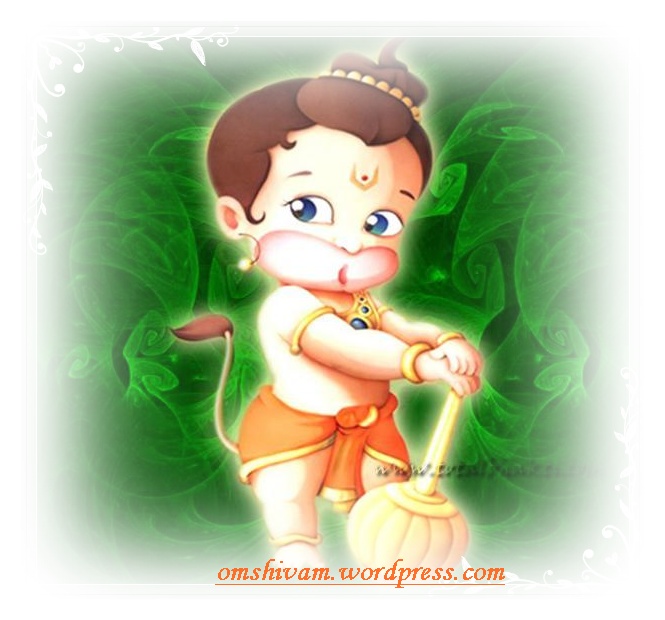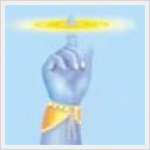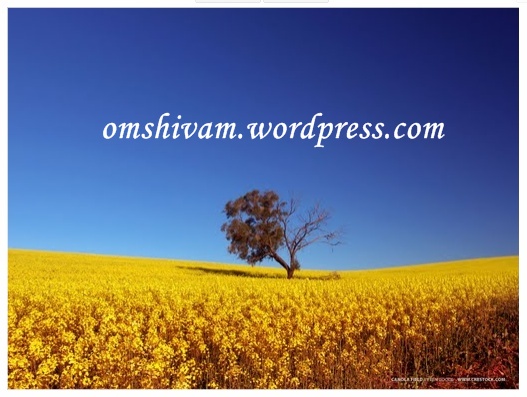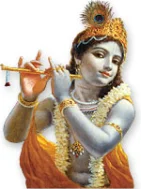Join the Akhand Mantra Jaap of Maha Mriyunjaya Mantra
Akhanda Jaap for the world peace and prosperous new year. This is the great way to start our New Year.
to ashram.org
Ashram
काली चौदस / मासिक शिवरात्रि

Kali Chaudas Narak Chaturdashi 12 nov 2012
Naraka Chaturdashi, also known as “Chhoti Diwali” or Kali Chaudas is a Hindu festival, which falls on the second day of the festival of Diwali.
Kali means Dark and Chaudas – Fourteenth. Thus, celebrated on the 14th day of the dark half of Kartik, Kali Chaudas is the day allotted to the worship of Maha-Kali or Shakti.
Diwali Tips from Ashram.org
Maa Lakshmi Mantra Sadhana on Kali Choudas
दिवाली की रात कुबेर भगवान ने लक्ष्मी जी की आराधना की थी तो कुबेर बन गए ,जो धनाढ्य लोगो से भी बड़ा धनाढ्य है..सभी धन का स्वामी है..ऐसा इस काल का महत्त्व है.. दिया जलाके जाप कराने वाले को धन, सामर्थ्य , ऐश्वर्य पाए…ध्रुव , रजा प्रियव्रत ने भी आज की रात को लक्ष्मी प्राप्ति का , वैभव प्राप्ति का जप किया था…मन्त्र बहुत सरल है…मन्त्र का फल प्राप्त करने के लिए श्रद्धा से मंत्र सुने –
माँ लक्ष्मी मन्त्र :-
श्रीं ह्रीं क्लीं ऐं कमलवासिन्यै स्वाहा
Shreem Hreem Kleem Aieem Kamalvaasinyai Swaha

The Second Day of most holy festival Deepavali is called Narak-Chaturdashi or more popularly as Chhoti Diwali which falls on the 14th day of the month of Kartik. This festival is observed to commemorate the victory of Lord Krishna over the demon king, Narkasur. This day is also celebrated as the birthday of Hanumanji in spiritual form or Hanuman jayanti. Also, on this day Hanumanji reached Ayodhya to deliver the long-awaited message of Lord Shree Sita Rama’s return. Just like diwali people light diyas on chhoti diwali to fill their homes with light, worship Goddess Laxmi and offer prayers to Her and they also burst firecrackers
Also referred to as Narak-Chaturdashi, Kali Chaudas is day to abolish laziness and evil which create hell in our life and shine light on life.
Narak Chaturdashi Snan is considered as the most auspicious ritual to perform on this day. It is believed that this festival marks the ending of darkness and beginning of brightness or happiness in the world.
Narak Chaturdashi:
The prayer to chant just before Naraka Chaturdashi Snan:
Ashwatthama balirvyaso Hanumancha vibheeshanah krupah Parashurashcha sapthaithe Chiranjeevinah
The above mantra is chanted by mothers before giving bath to their children. Chanting this sloka mothers shower their babies
Akshata (consecrated rice) on childrens heads.
After Narak Chaturdashi snan, this given mantra is chanted:
Bhramayeth snanamadhyethu narakasya kshayayahi
Sheetaloshta samayuktha sakantaka dalanvitha
Hara papa mapaamaarga Bhramyamaanah punah punah
While lighting deepa or diya and remembering ancestors, the below given mantra is chanted in the evening:
Chaturdashyam thu Yedeepaan narakaya dadanthi cha
Thesham pitruganassarve narakath swarga maapnuyu
The strength to protect others is referred as Kali,
The poojan is performed with flowers Coconuts are also offered as prashad to Hanumanji.

Kali means Dark ( the destroyer of evil ) and Chaudas – Fourteenth. Thus, celebrated on the 14th day of the dark half of Āshwin month, Kali Chaudas is the day allotted to the worship of Maha-Kali or Shakti and is believed that on this day mother goddess Kaali killed the wickedest.
Also referred to as Narak-Chaturdashi, Kali Chaudas is day to abolish laziness and evil which create hell in our life and shine light on life. The strength to protect others is referred as Kali, and if its used for God’s work is called Mahakali.
The poojan is performed with oil, flowers, Chanda and Coconuts are also offered to Hanumanji and prasad
The rituals of Kali Choudas is strongly based on Tantra & Mantra sadhana concept of Spiritual Hinuduism
On this night, the kajal made from the diya or deepam with mustard oil (Sarsoo ka tel )in it, which is kept lightened the whole night has special powers,application of this kajal in the eyes or on babies forehead, is believed to keep away the nazar (evil eye).
After the puja, the diyas are placed in and around the house: in the doorway, near the Tulasi plant.
This night is very special for Mantra Siddhi
Alternatively, people offer Nivedya to the goddess This goddess is called their ‘Kul Devi’, in order to cast off evil spirits. The second day of Diwali is known as Kali Choudas .
This day celebrates the victory of the Lord Shri Krishna & his consort Satyabhama over the evil demon of filth, Narakasura.
Celebration & Traditions
The Story of King Bali :
With his valour Bali conquered every bit of space, thus he became the most powerful king on earth. In his kingdom, justice was mere word, truth had no place and happiness was a dream. His form of charity was an occasion for pomp and show and those who went to seek Alms from the king Bali suffered the indignity of insults and humiliation. In fact, he felt that the vast wealth will remain and the pittance he handed out now and again could not affect even an iota of his asset. His false beliefs, arrogance and misrule ended when the Lord disguised as beggar and humble proved to Bali that his concepts were totally wrong and even his vast wealth could disappear in seconds. King Bali asked the dwarf beggar to ask for anything in his kingdom and with three steps even his crown vanished. With his first step Lord Vishnu covered the entire heaven and with the second step the earth and asked Bali where to keep his third step. Bali offered his head and became spiritually enlightened. Thus, this festival has a far deeper significance than a mere exhibition of gaiety and splendor. The Narak chaturdashi day therefore is dedicated to lights and prayers heralding a future full of joy and the elimination of greed.
Celebrations :
In South-India, people wake up before sunrise prepare a paste by mixing Kumkum in oil, which is called ‘Ubtan’, on their foreheads and then take bath.
Bathing after rubbing oil on body on this morning of Narak Chaturdashi gives Long Life & good Health
Story of Narakchaturdashi from Srimad Bhagvad Maha Puraan
In Dwapar Yuga, Lord Krishna, the ascendant of Lord Vishnu, killed the notorious demon Narakasura on the same day as that of Diwali.
Narakasura was the son of Goddess Bhoomi. Despite of a great parentage, he possessed devilish tendencies.
Narakasura gota boon that he may be only killed by the hands of a women as he considered them to be weak he thought he would become immortal.
After getting this boon he started terrrifying all the three worlds.
He used to loot the people of three worlds and due to the supernatural powers he had nobody could stop him. Not only he plundered their valuable things, but abducted the womenfolk too. There was a terror of Narakasura everywhere.
Once Narakasura attacked the heavens to get hold of the army of elephants of Lord Indra. Indra being helpless before the demon, immediately to Lord Krishna to ask for help. Krishna at that time was spending a leisurely time with his wife Satyabhama. In order to fulfill both his duties as a friend and as a husband he took Satyabhama at the battlefield.
On his divine vehicle Garuda (a giant eagle), Lord Krishna set for the fort of Narakasura. His grand fort was guarded by a five headed demon Mura.
Lord shri Krishna destroyed all his forts and raksha kavachs along with the whole army of demons.

With his Sudarshana flying discus, Krishna beheaded Mura and then challenged Narakasura to come to fight on the battlefield.
It was an easy victory for great Shri Krishna. Narakasura was killed by Goddess Satyabhama inthe battle.The killing of Narakasura again takes us to the message that it is inevitable for virtue and truth to win over vice and evil.
Filed under: Aaradhana, Aarti, All about Hinduism, Ancient scriptures, Ashram, ashram.org, ashramblog, ashramblog.wordpress.com, AUM, Ayurveda, Bhagvaan, Bhagvan, Bhagvan Shri Krishna, Bhajan, Bhakti, bharatadarshanam.wordpress.com, Bhartiya Jyothish, Brahmarishi, Deva Diwali, Divine, Festival, Festival of Nature, Hind scriptures, Hindu, Hindu Books, Hindu Gods & Goddesss, Hindu Legend, Hindu Rituals, Hindu Scriptures, Hindu Tradition, Hindu Wisdom, Holy, Holy Days of Hindu Calender, Hymns, Indian Astrology, Indian Culture, Indian Epics and Stories, Indian Religion, Ishwara, jaisiyaramji.wordpress.com, Karpoor Aarti, kartikarjun, Legends & Myths, Maharishi, Mandir, mantra, Mantra Sadhana, Meditation, Nature, Navaratri, omshivam.wordpress.com, omshivashakti.wordpress.com, omshriram.blog.com, omshriram.blogspot.com, omtattvamasi.blogspot.com, parva, Pushpanjali, Religious, Religious significance, Rishi, Sages, Saints, Sat Chit Ananda, Satya meva Jayate, Shivaratri, SocialFestival, spiritual, Spiritual Hindu, sreemadbhagvadgita.blogspot.com, srimadbhagvadita.blog.com, Stories & Legends, Stories for Children, stories from Bhagvatham, Stotra, Stuti, succesfull life tips from ashram, Swami Vivekananda, Tales in Art and Mythology, Tantra, teeratharatan, teertha, Temples, True Yogi Of Sreemadh Bhagvad Gita, Vashu Shastra, vedanta, Vedas, Vedic Grantha, Vedic Jyothishj, Vedic Raksha Sutra, Vishwa Guru, vrata, yogi, Yogis, YouTube kartikarjun's channel | Tagged: All about Hinduism, Ancient scriptures, Ashram, ashram.org, ashramblog, ashramblog.wordpress.com, AUM, bhagvaan, Bhajan, bhakti, Divine, Festival, Festival of Nature, Health Care, Hind scriptures, Hindu, Hindu Books, Hindu Gods & Goddesss, Hindu Legend, Hindu Rituals, Hindu Scriptures, Hindu Tradition, Hindu Wisdom, Holy, Holy Days of Hindu Calender, Hymns, indian astrology, Indian Culture, Indian Epics and Stories, Indian Religion, Ishwara, jaisiyaramji.wordpress.com, kaali chaudas, kaali choudas, kali chaudas, Kali choudas, kartikarjun, Legends & Myths, Maharishi, mantra, Mantra Sadhana, meditation, narak chathurdashi, Narak-Chaturdashi, Nature, omshivam.wordpress.com, omshivashakti.wordpress.com, omshriram.blog.com, omshriram.blogspot.com, omtattvamasi.blogspot.com, Religious, Religious significance, Rishi, Sages, saints, Sat Chit Ananda, Shivaratri, shrikrishnagita, shrikrishnagita.wordpress.com, SocialFestival, spiritual, Spiritual Hindu, sreemadbhagvadgita.blogspot.com, srimadbhagvadita.blog.com, Stories & Legends, Stories for Children, stories from Bhagvatham, stotra, stuti, succesfull life tips from ashram, swami vivekananda, Tales in Art and Mythology, Tantra, Temples, The Hindu Encyclopedia, True Yogi Of Shrimad Bhagvad Gita, Uncategorized, Vashu Shastra, vedanta, Vedas, Vedic Grantha, Vedic Raksha Sutra, Vishwa Guru, yogi, Yogis | Comments Off on Kaali Chaudas


























































































 Om Tat Tvam Asi
Om Shanti Shanti Shantihi
Om Tat Tvam Asi
Om Shanti Shanti Shantihi
You must be logged in to post a comment.